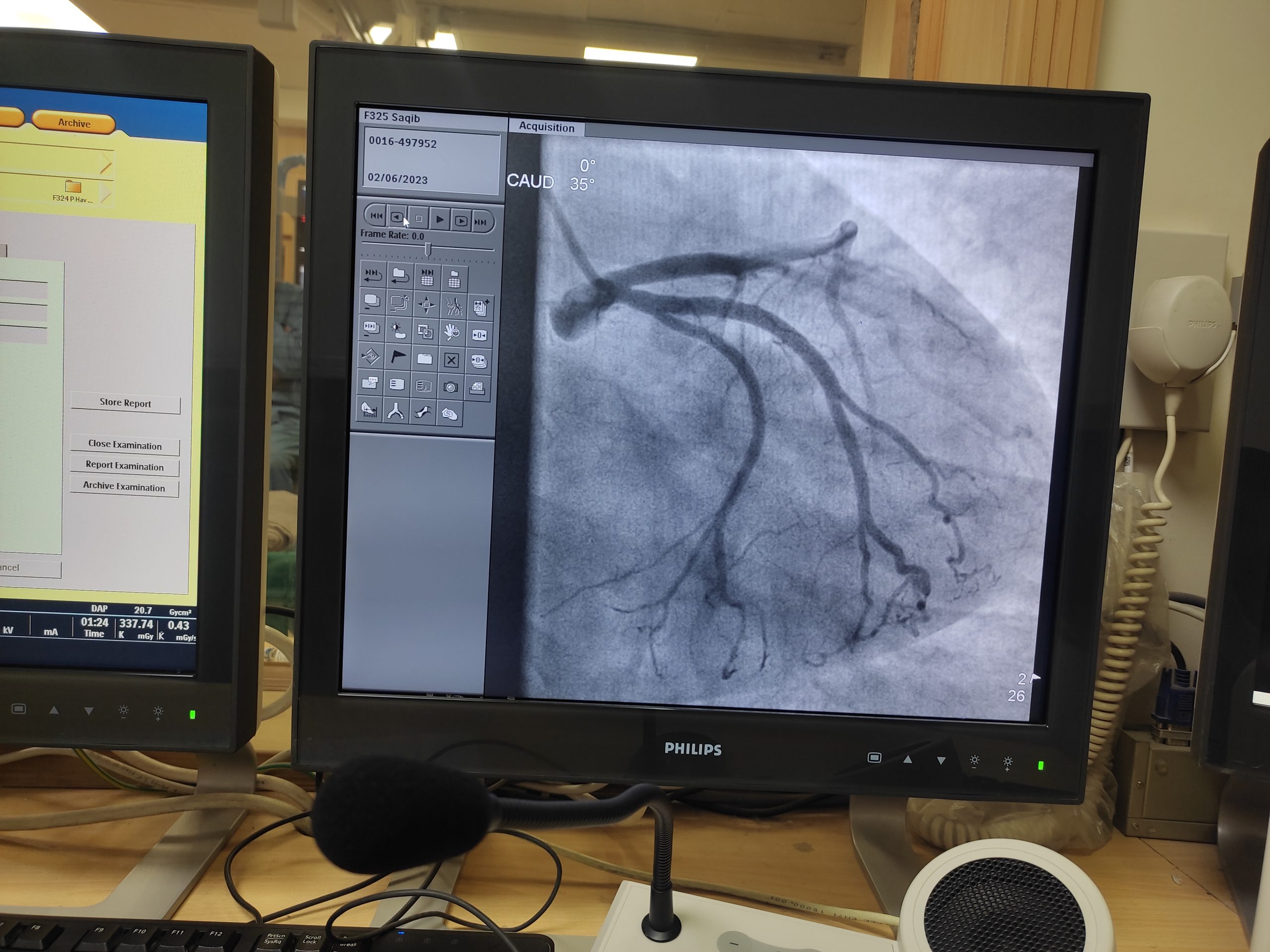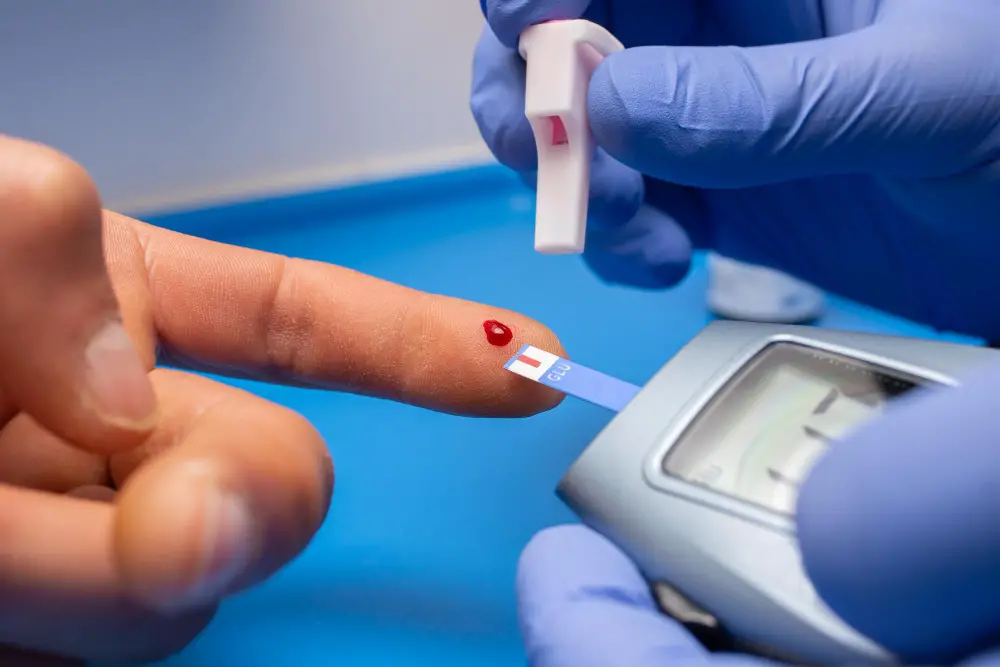
Table of Contents
What is Coronary Angiography
Coronary angiography is a medical procedure that is used to examine the blood vessels that supply the heart muscle with blood. The procedure involves the use of a special dye and X-rays to create detailed images of the coronary arteries.
The coronary arteries are the blood vessels that supply the heart with oxygen and nutrients. When these arteries become narrowed or blocked due to the buildup of plaque, it can lead to a heart attack or other serious heart problems.
Coronary angiography is used to identify blockages in the coronary arteries and to determine the best course of treatment.
The procedure is usually performed in a hospital or clinic, and you will be awake during the procedure. Before the procedure, you will receive a mild sedative to help you relax.
A local anesthetic will be used to numb the area where the catheter will be inserted.
The procedure begins with the insertion of a thin, flexible tube called a catheter into an artery in your wrist or groin.
The catheter is then threaded up to your heart, and a special dye is injected into the coronary arteries. The dye shows up on X-ray images, allowing your doctor to see any blockages or narrowings in the arteries.
During the procedure, you may feel a warm sensation as the dye is injected, but it should not be painful. You may also be asked to hold your breath for a few seconds to help get clear images.
Once the procedure is complete, the catheter will be removed, and pressure will be applied to the site to stop any bleeding.
You will be monitored for a short time to make sure there are no complications.
After the procedure, you may experience some bruising or soreness at the site where the catheter was inserted.
You should avoid any strenuous activities for a few days, and your doctor may recommend some other precautions.
Overall, coronary angiography is a safe and effective way to diagnose and treat problems with the coronary arteries.
If you have symptoms of heart disease, your doctor may recommend this procedure to help determine the best course of treatment for you.
Who Should Get a Coronary Angiogram
The following are some of the most common indications for a coronary angiogram:
- Chest pain or discomfort: If you experience chest pain, pressure, or discomfort, especially during physical activity, your doctor may recommend a coronary angiogram to determine if there is a blockage or narrowing in the coronary arteries.
- Abnormal results from other tests: If other tests, such as an electrocardiogram (ECG) or a stress test, suggest that there may be a problem with the coronary arteries, a coronary angiogram may be recommended to confirm the diagnosis.
- Family history of heart disease: If you have a family history of heart disease, your doctor may recommend a coronary angiogram to assess your risk of developing heart disease.
- Previous heart attack: If you have had a heart attack in the past, a coronary angiogram may be recommended to determine the extent of the damage to the coronary arteries and to identify any blockages that may need to be treated.
- Unexplained heart failure: If you have symptoms of heart failure, such as shortness of breath, fatigue, or swelling in the legs, a coronary angiogram may be recommended to determine if there is a problem with the coronary arteries that is causing the heart failure.
- Other conditions: Coronary angiography may also be recommended for people with certain medical conditions, such as diabetes, kidney disease, or peripheral arterial disease, which increase the risk of heart disease.
Overall, a coronary angiogram is a useful diagnostic tool that can help identify problems with the coronary arteries and guide treatment decisions. If you are experiencing symptoms of heart disease or have other risk factors, talk to your doctor about whether a coronary angiogram may be appropriate for you.
Is There Any Alternative to Coronary Angiography
Yes, there are some alternatives to coronary angiography that may be used in certain situations.
However, it is important to note that coronary angiography is considered the gold standard for diagnosing problems with coronary arteries, and these alternatives may not provide the same level of accuracy.
These include Non-invasive tests, such as a cardiac computed tomography (CT) scan, a cardiac magnetic resonance imaging (MRI) scan, or a nuclear stress test.
These tests can provide detailed images of the heart and coronary arteries without the need for invasive procedures.
These tests may be recommended for people who cannot undergo a coronary angiogram due to other medical conditions or for those who prefer to avoid invasive procedures.
Can A Person Die During A Coronary Angiography?
Although rare, it is possible for a person to die during coronary angiography.
However, the risk of death associated with this procedure is extremely low, estimated to be less than 1 in 1,000 cases.
The most common risks associated with coronary angiography include bleeding, bruising, or infection at the site where the catheter was inserted, and an allergic reaction to the dye used during the procedure.
In addition, there is a small risk of damage to the artery or heart muscle, which could potentially lead to a heart attack or other serious complications.
To minimize the risk of complications, it is important to inform your doctor if you have any medical conditions or are taking any medications that could increase your risk of bleeding or other complications.
Your doctor will also carefully monitor your vital signs and take steps to ensure your safety during the procedure.
Overall, while there are risks associated with coronary angiography, the benefits of this procedure in diagnosing and treating heart disease generally outweigh the risks.
If you are concerned about the risks of the procedure, talk to your doctor about your concerns and any other diagnostic options that may be available to you.



